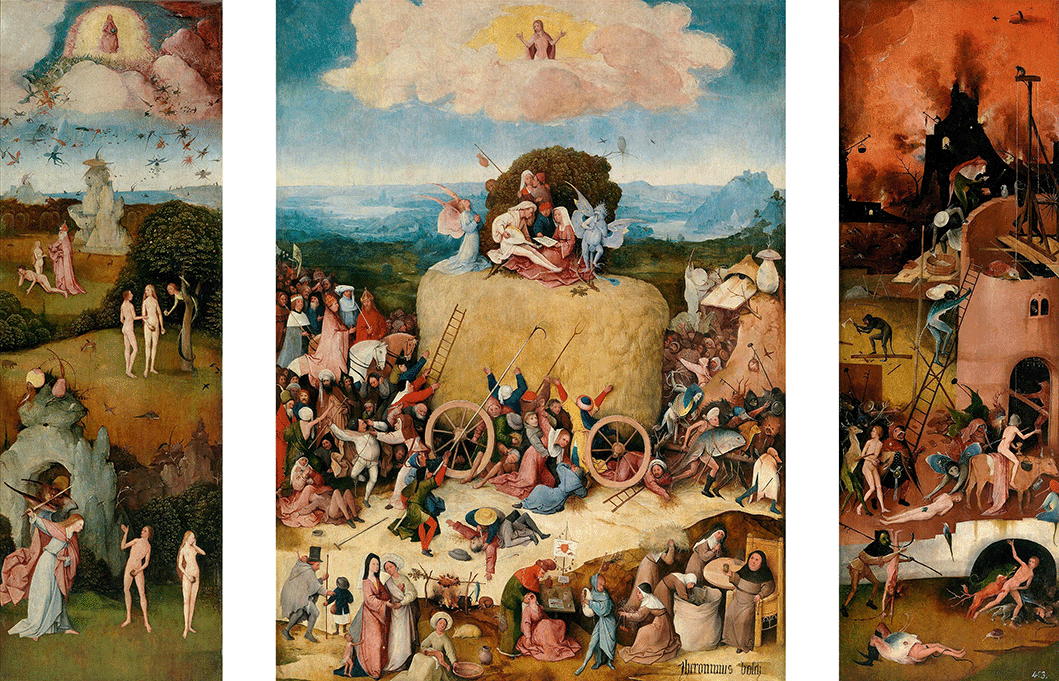The art of dying
6.3 Morality and death
Images about death often had a dual purpose. They were intended to shock the viewer, to play on the natural fear of death, as a reminder of the value of leading a good life, and they were about reminding people to prepare for the afterlife. The latter, of course, follows on, in a Christian world view, from the former. Treatises were written on the art of dying, and more specifically on the art of dying well - that is, with all one's spiritual affairs in order. Common imagery included the dying man in bed, sometimes being tempted, sometimes being reminded of past sins, sometimes shown in a state of peace and grace.
These texts were often illustrated with woodcuts, but prints were also made independently - these were sometimes pasted into Bibles as part of the private devotion of individuals. As well as prints, moralistic paintings were made, such as the tabletop by Hieronymus Bosch (Smith, illus. 127), which has the seven deadly sins in a circle around the eye of God, with moralising messages, and four roundels of what were known as the four last things - death, judgement, heaven and hell.
This object was unlikely to have been used as an actual table, but rather attached to the wall as a conversation piece for a wealthy patron, as well as a reminder to him or her of the message it contained. To die well meant to have lived a morally good life - Bosch's tabletop includes the image of hell, as a reminder that one could not be complacent in the face of death.
Optional activity: The Haywain by Hieronymous Bosch

Hieronymous Bosch, The Haywain, c. 1490-95 Museo del Prado
GL Archive/Alamy Stock Photo
We shall look at another painting by Bosch (The Garden of Earthly Delights) later in the course, but he is a painter you might want to find out more about. Bosch painted a number of moralising paintings. Look at his painting The Haywain in the Prado.
Here are some suggestions for how to begin to look at this painting in some depth.
- What moral lessons do you think The Haywain reveals? (Look for information online and see if you can find out some details about this.)
- Would you have understood the moral lessons without trying to find out more information?
- Are there surprises when you look at the painting closely, things you didn't notice when you first looked at it?
- Why do you think this is painted in the form of a triptych, thus resembling a church altarpiece?
- What do you think is the overall view of human behaviour and its consequences depicted here by Bosch?
- Is this an easy painting to understand? If not, what purpose do you think it might have served in the sixteenth century?